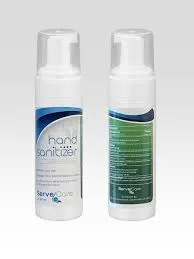1 hydroxyethylidene 1 1 diphosphonic acid hedp
The Versatile Applications of 1-Hydroxyethylidene-1,1-Diphosphonic Acid (HEDP)
1-Hydroxyethylidene-1,1-Diphosphonic Acid (HEDP) is a vital chemical compound frequently utilized in various industrial applications due to its ability to inhibit scale formation and corrosion. As a member of the phosphonic acid family, it possesses unique properties that make it invaluable in industries ranging from water treatment to pharmaceuticals. This article explores the characteristics of HEDP, its applications, and the mechanisms behind its effectiveness.
Chemical Structure and Properties
HEDP is a chelating agent with a chemical structure that facilitates its interaction with metal ions. It typically exists as a colorless to pale yellow liquid or crystalline solid, and its stability in both acidic and alkaline environments makes it a versatile choice for numerous applications. The molecular formula for HEDP is C2H8O7P2, and its ability to act as a phosphonate allows it to effectively bind to metal ions such as calcium, magnesium, and iron.
Water Treatment Applications
One of the primary applications of HEDP is in water treatment processes, particularly in cooling systems, boilers, and other industrial water systems. HEDP acts as a scale inhibitor, preventing the precipitation of mineral deposits that can lead to decreased efficiency and potential equipment damage. By chelating calcium and other metal ions in water, HEDP reduces the risk of scale formation on surfaces, thus extending the lifespan of equipment and reducing operational costs.
Moreover, HEDP is effective in controlling corrosion. Corrosion can be a significant problem in metal pipes and tanks, leading to leaks and structural integrity issues. HEDP's ability to form stable complexes with metal ions mitigates corrosion by reducing the availability of free metal ions that can contribute to rust and deterioration. The result is enhanced protection for piping systems and related infrastructure, making HEDP an essential component in many anti-corrosion formulations.
Use in Detergents and Cleaners
1 hydroxyethylidene 1 1 diphosphonic acid hedp

HEDP is also widely used in household and industrial cleaning formulations. Its ability to soften water makes it an effective component in detergents, enhancing their cleaning power. By binding to calcium and magnesium ions in hard water, HEDP allows surfactants to function more efficiently, resulting in superior cleaning performance. This property has led to its inclusion in various laundry detergents, dishwashing liquids, and surface cleaners.
Pharmaceutical and Agricultural Applications
Beyond industrial uses, HEDP has found applications in the pharmaceutical and agricultural sectors. In pharmaceuticals, HEDP is used in formulations that require stability and efficacy, particularly in the production of bone-related treatments. Its chelating ability can stabilize certain compounds, improving their bioavailability.
In agriculture, HEDP can be utilized to enhance nutrient uptake in plants. It binds to essential mineral ions, making them more accessible to crops. This facilitates better growth and can contribute to higher yields, making HEDP an asset in modern agricultural practices.
Environmental Considerations
With growing awareness of environmental issues, the use of HEDP has been evaluated for its ecological impact. Studies indicate that, when used appropriately, HEDP poses a low risk to aquatic environments. Its biodegradability is an important factor, as it helps minimize potential adverse effects on ecosystems.
Conclusion
1-Hydroxyethylidene-1,1-Diphosphonic Acid is a versatile compound with a diverse range of applications across multiple industries. From water treatment to detergents and pharmaceuticals, HEDP plays a crucial role in improving efficiency and performance. Its ability to inhibit scale and corrosion while being relatively safe for the environment underscores its importance in modern industrial practices. As research continues to explore its potential, HEDP remains a key player in the quest for innovative and sustainable solutions in various sectors.
-
Pbtc Scale InhibitorPBTC: A Scale Protector for Industrial Water TreatmentNewsAug.05,2025
-
Organic Phosphonate: An Efficient Defender in the Field of Scale InhibitionNewsAug.05,2025
-
Hydrolyzed Polymaleic Anhydride: Green Pioneer in Scale Inhibition FieldNewsAug.05,2025
-
PAPEMP Polyamino Polyether Methylene Phosphonic Acid For SaleNewsAug.05,2025
-
Flocculant Water Treatment: A Pioneer in Purification in the Field of Water TreatmentNewsAug.05,2025
-
Benzyl Isothiazolinone: An Efficient and Broad-Spectrum Antibacterial Protective GuardNewsAug.05,2025





